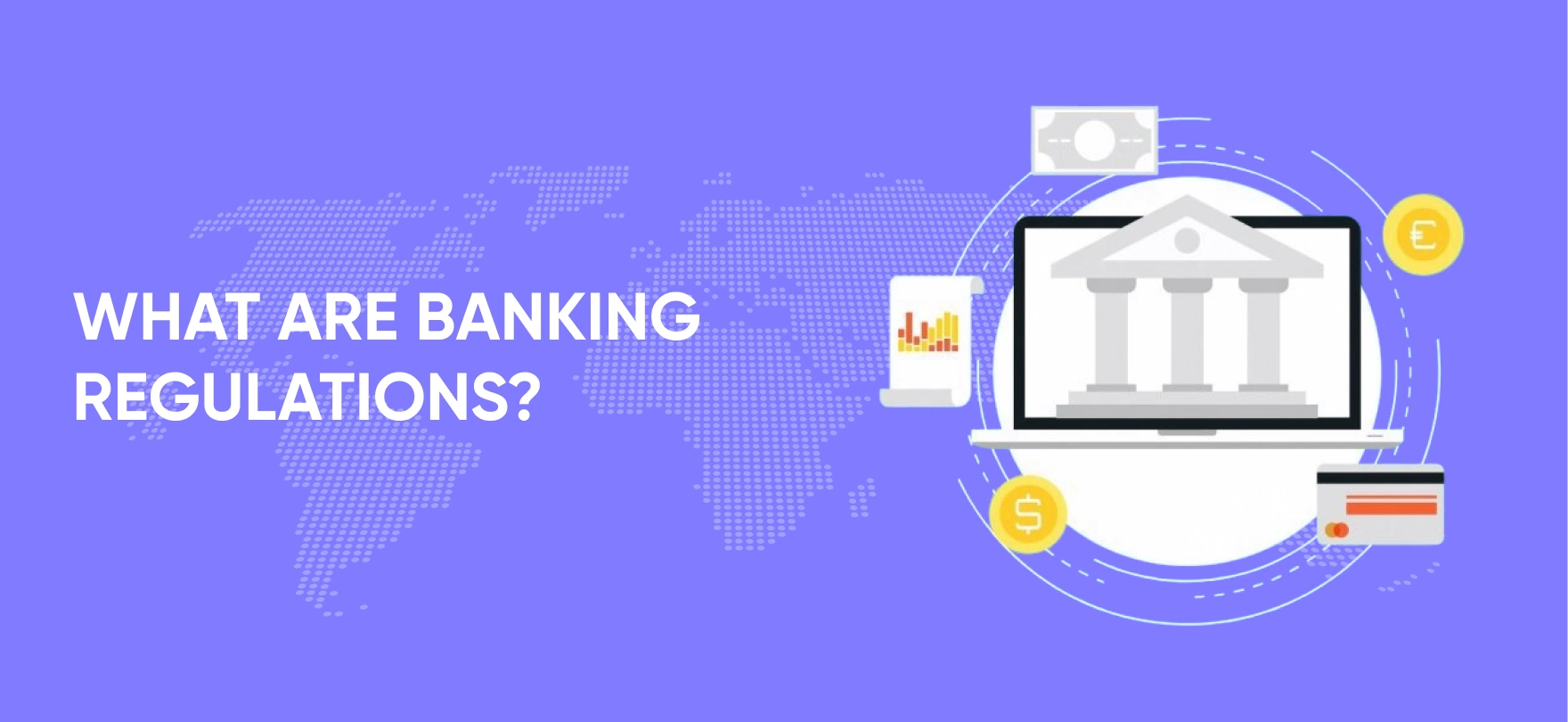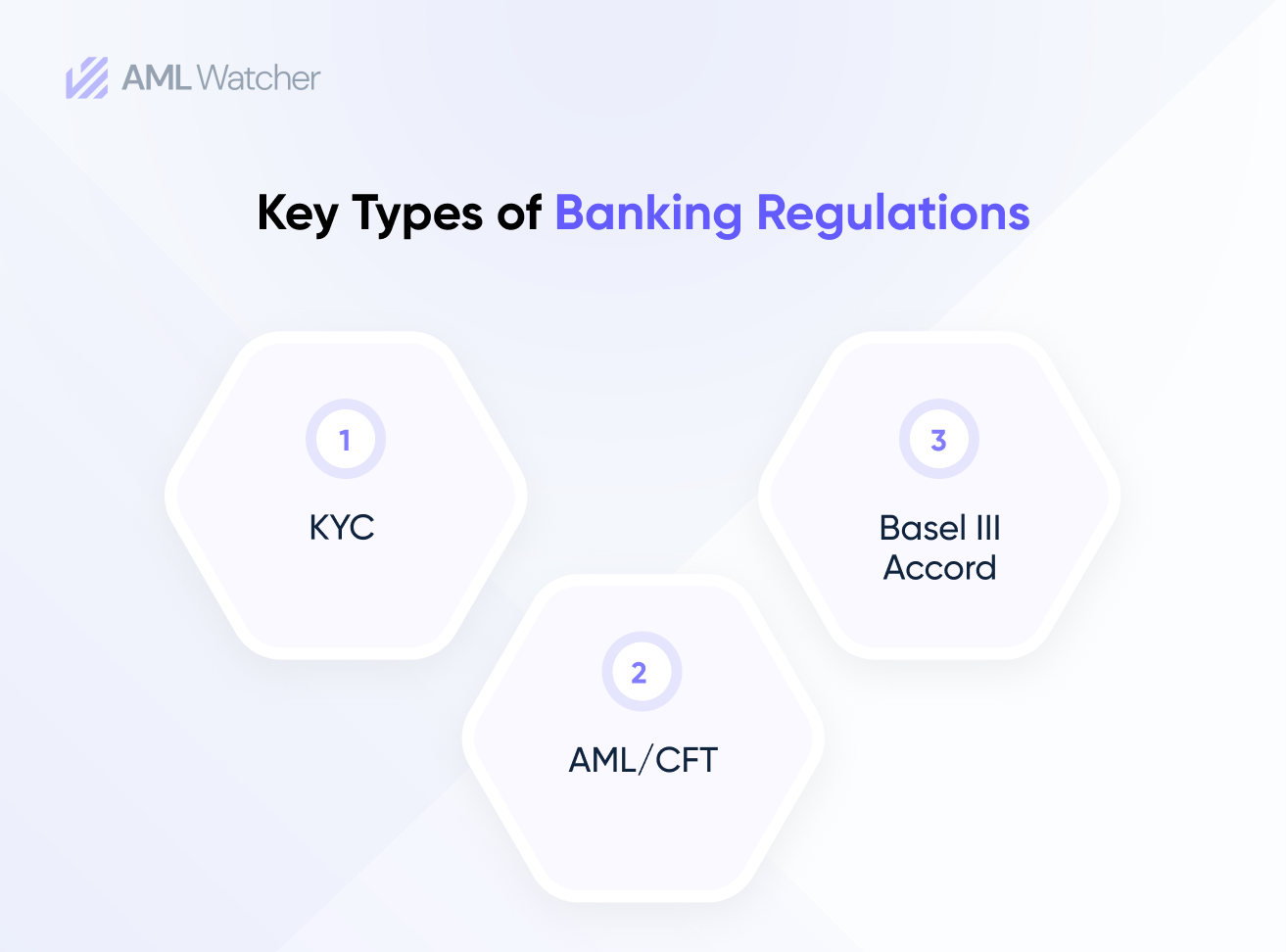
What are Banking Regulations?
Did you know that, midway through 2025, banks around the world were fined over $600 million for failing to comply with anti-money laundering (AML) rules and regulations? From issues with poor AML compliance solutions and breaches of regulatory law, financial regulators found severe issues with banks not following specific banking regulations.
In contrast, what if financial institutions operated without bank rules or any regulatory oversight? If financial institutions could be fined $600 million despite an extensive network of bank regulations, what would be the cost of these breaches without this extensive regulatory network?
It would be a nightmare for the economy and consumers alike. Without rules, banks could lend irresponsibly, facilitate money laundering, or crash entire economies.
While the regulatory landscape covers a broad range of areas – including capital adequacy, risk management, consumer protection, and Know Your Customer (KYC) – one area remains particularly high-risk and complex: Anti-Money Laundering compliance (AML).
So, what is regulatory compliance in banking? And why should your institutions care so much about it?
Understanding Banking Regulations
Simply put, banking regulations and compliance are a set of laws and rules, that dictate how financial institutions operate. They establish guidelines for the banks to follow – ensuring operational safety, protecting consumers, and preventing/mitigating financial crimes. The core focus of these regulations is to:
- Provide financial stability through risk management.
- Safeguard consumers/customers through transparent and fair banking practices.
- Prevent crimes such as terrorist financing, money laundering, and financial fraud.
Banking regulations, thus, serve as rules and principles for financial institutions – directing banks to play fair, utilize effective risk management strategies, and safeguard their customers’ money.
Banking regulations are also critical to the stability of entire financial systems. So, without stringent regulations and oversight, global economic crises like the 2008-2009 financial crash would be more frequent and severe. More importantly, banking rules and guidelines help protect you – whether you’re a consumer, a business owner, or a financial institution – from fraud, financial instability, and criminal activity.
Why do Banking Compliance Regulations Matter?
Why do bank regulations matter? And what does bank compliance regulation mean?
- Financial Penalties:
Banks that fail to adhere to banking regulations risk severe monetary penalties, often amounting upto billions of dollars. Financial regulators around the globe, including the UK’s Financial Conduct Authority (FCA), the Office of Financial Sanctions Implementation (OFSI), and FinCEN, impose fines for lapses in banking regulations such as AML, negligent monitoring of transactions, or breaches of sanctions.
Beyond the immediate monetary impact, these fines are also accompanied by remediation requirements, audits, and increased scrutiny.
- Banking Regulations Safeguard Consumers:
The majority of banking regulations, specifically KYC and AML, are to ensure that financial institutions do not unknowingly aid bad actors in acquiring or storing illegal funds. Through stringent measures of identity verification, banking regulations also protect customers from fraud, identity theft, and exploitation.
For enforcement, financial regulators keep a watchful eye on banks to certify compliance with said banking regulations. For instance, in April 2025, a fintech company was fined $3.83 million by the Lithuanian Central Bank for failing to identify suspicious financial transactions – a direct consequence of poor AML solution software.
- Promoting Trust and Building Credibility :
Complying with the guidelines of financial regulators promotes trust between the bank and the regulator. It portrays that the financial institution operates in line with specific criteria- promoting transparency and building trust between customers and regulators. When an institution fails to meet these requirements, it risks reputational damage and, consequently, loss of customers.
For example, one of the world’s largest banks was fined $1.9 billion for its inadequate AML solution software that generated incorrect risk assessments for clients, and failed to screen transactions, leading investigators to find money laundering linked to Mexican drug cartels.
Given the size of the bank and the significance of the fine, this event severely damaged the bank’s reputation and resulted in loss of potential high-value clients.
According to FATF Recommendation 10 (Customer Due Diligence), financial institutions must understand and verify the identity of their customers to assess, manage associated risks and ensure that they are not facilitating illicit activities.
Key Types of Banking Regulations and Compliance Financial Institutions Follow:
Having discussed what banking regulations are and their significance, the following section focuses on the key factors of banking regulatory compliance:
- Know Your Customer (KYC):
Rules that require banks to perform identity verification before onboarding customers. Verification of customer identity allows banks to prevent bad actors from succeeding in illegal financial activities such as fraud, illicit financial transactions, and identity theft.
- AML/CFT Regulations:
A set of rules that prohibit bad actors from laundering illicit money through a financial institution. As such, AML regulations require banks to monitor transactions, screen customers against a spectrum of metrics (including sanction lists, watchlists, PEP status, and adverse media), and flag dubious behaviour so that money laundering attempts may be thwarted.
- Basel III:
A comprehensive international regulatory framework for banks that concerns capital adequacy standards to reduce systemic risk. It directs banks to maintain a higher capital at all times to withstand unexpected financial crises.
What is the Role of AML Compliance Within Banking Regulations?
AML compliance is a regulatory requirement under the umbrella of banking regulations. It focuses on detecting financial crimes, including financing of terrorism and money laundering. While KYC ensures banks know who their clients are, AML ensures that those clients’ transactions do not involve illicit activities.
AML compliance requires banks to:
- Screen customers against sanction lists, watchlists, and PEP lists, etc.
- Continuously monitor transactions to identify any suspicious activity.
- Monitor developing issues and continuously update the newly received information so the risk assessment database reflects the latest information.
These obligations render AML compliance both complex and resource-intensive – especially for international banks and financial institutions that have to remain vigilant about rapidly changing regulatory requirements from country to country
How Can Banks Stay Ahead of the Compliance Game?
So, following banking regulations effectively does not have to be an intimidating task. Financial institutions that incorporate advanced and effective compliance technology can stay ahead of the ever-changing regulations and notably reduce their exposure to risk.
Both the FATF and the European Union (EU) have repeatedly emphasized the significance of using technology to enhance AML and KYC compliance. Banks that adopt real-time screening tools and global databases can effectively identify and flag suspicious patterns before they escalate into larger issues.
Ready To Take Your Compliance to the Next Level?
At AML Watcher, we help banks stay ahead of the ever-changing regulations that lead to effective compliance. Through our advanced AML solutions, we help banks streamline the compliance process and efficiently address challenges.
- Real-Time Payment Screening: AML Watcher screens transactions before they’re processed, detecting high-risk counterparties, sanction hits, and Politically Exposed Persons (PEP) links/status in real-time.
- Comprehensive Criminal Watchlist Coverage: Access to over 3,500 global criminal watchlists by agencies such as the FBI and Interpol, ensuring thorough screening against international sanctions and PEP databases.
- Advanced Risk Scoring: Customizable risk models based on transaction history, external indicators, and customer profiles, tailored to your institution’s risk appetite.
- Biometric Screening: Utilizing advanced facial recognition solutions to verify customer identities, reducing fraud, and enhancing KYC processes.
- Ongoing Monitoring: Constant monitoring of transactions and customer behavior to identify and mitigate risks promptly.
Banking regulations can seem like a burden to figure out; we understand that. However, by incorporating the right regulatory tech solution, banks can streamline AML compliance, reduce operational inefficiencies, and respond in a timely manner to any regulatory requirements. These are exactly the tools AML Watcher will equip your institution with – allowing you to stay compliant, reduce the risk of financial crime, and maintain confidence within the broader banking regulatory landscape.
We are here to consult you
Switch to AML Watcher today and reduce your current AML cost by 50% - no questions asked.
- Find right product and pricing for your business
- Get your current solution provider audit & minimise your changeover risk
- Gain expert insights with quick response time to your queries






